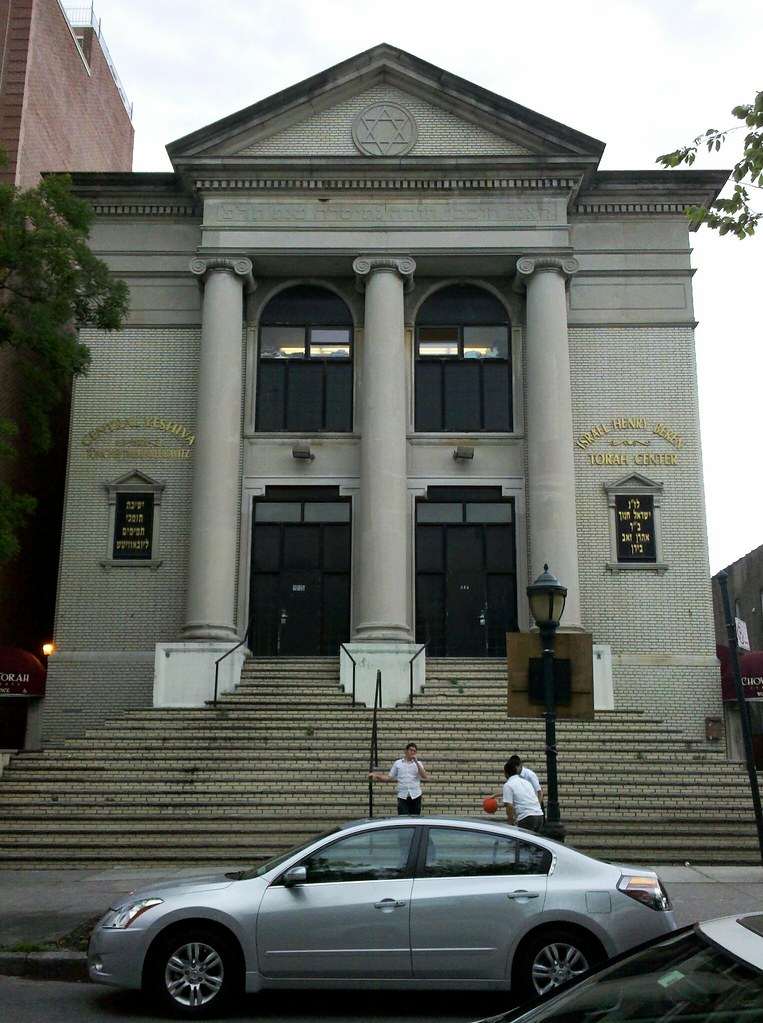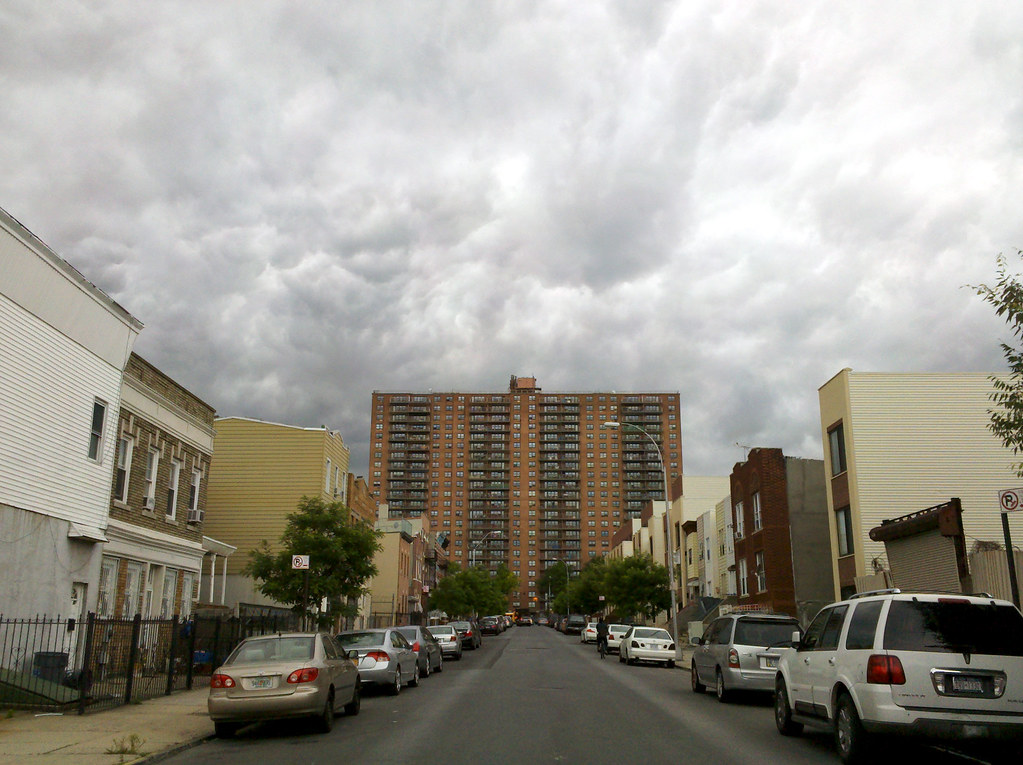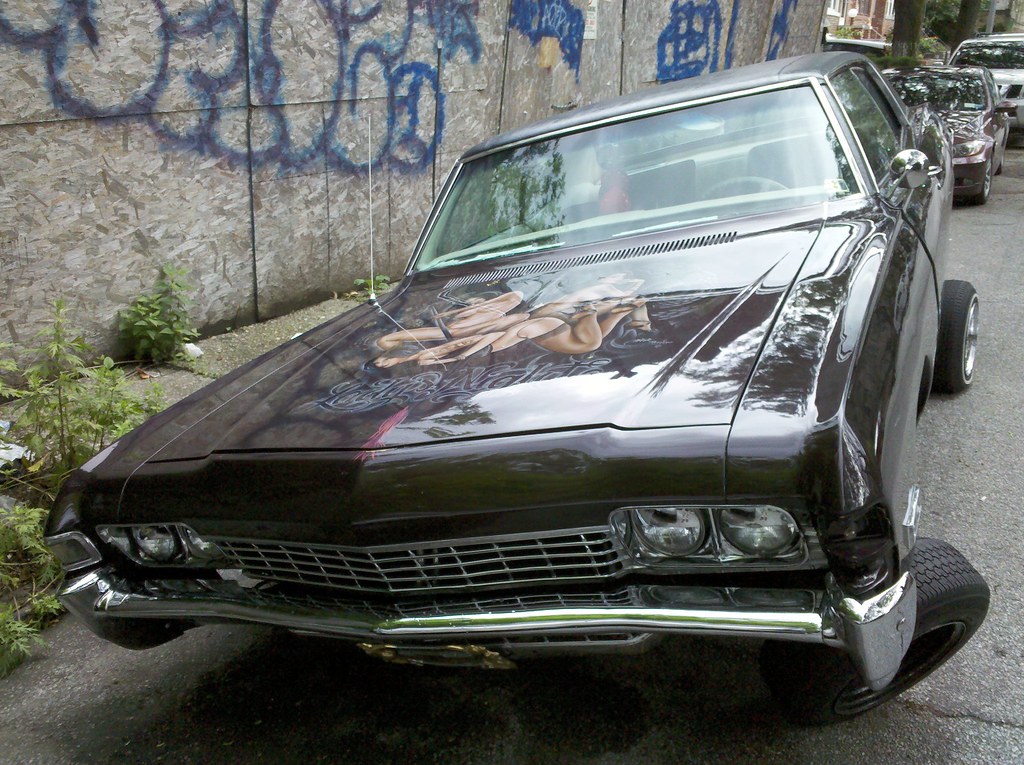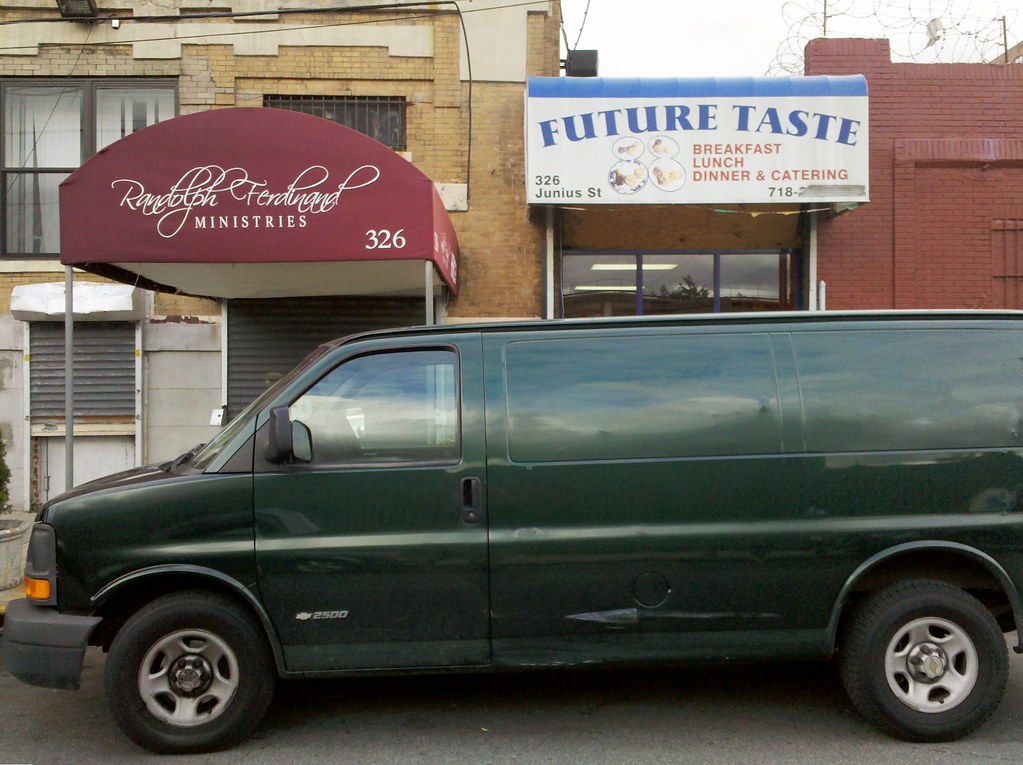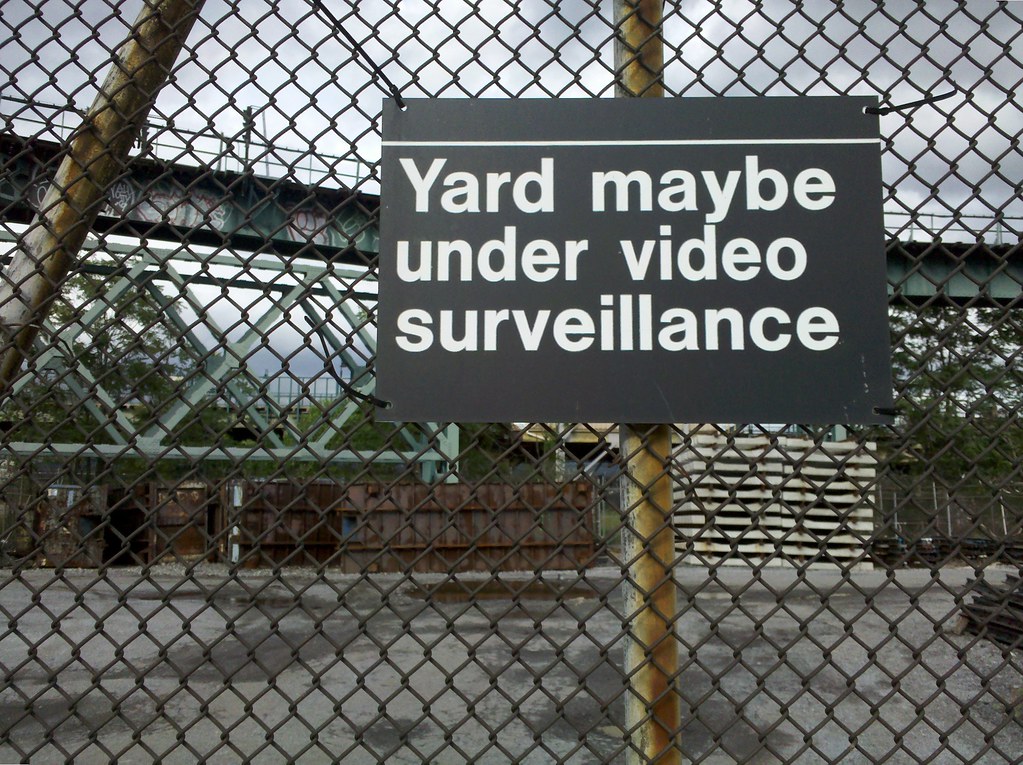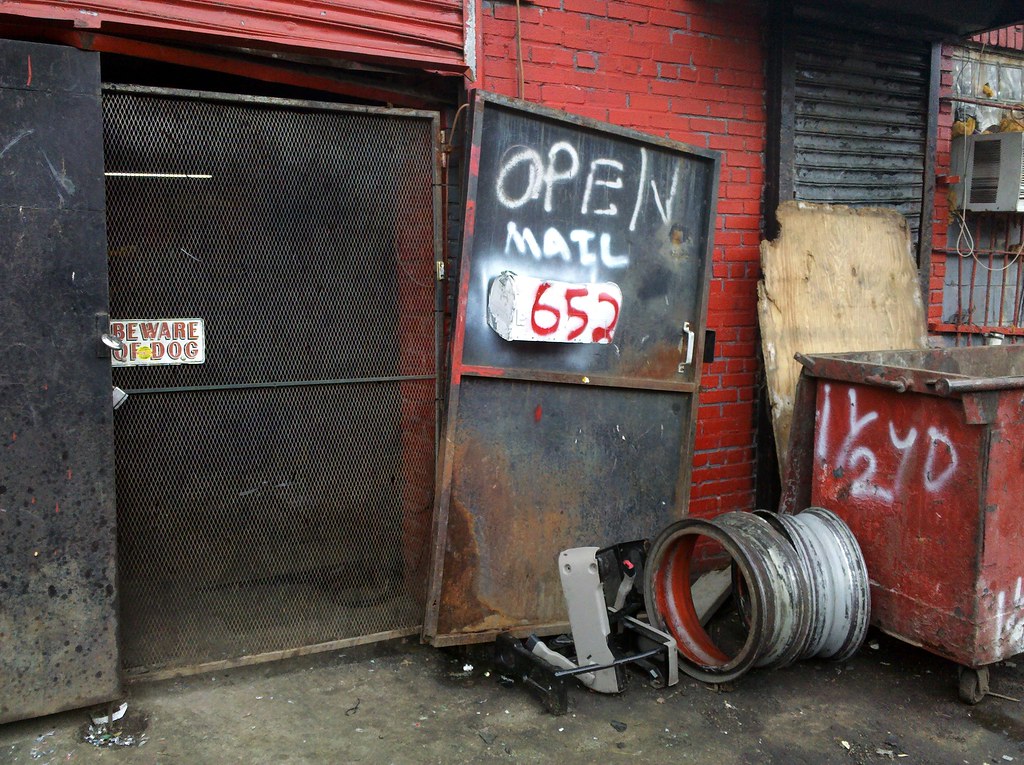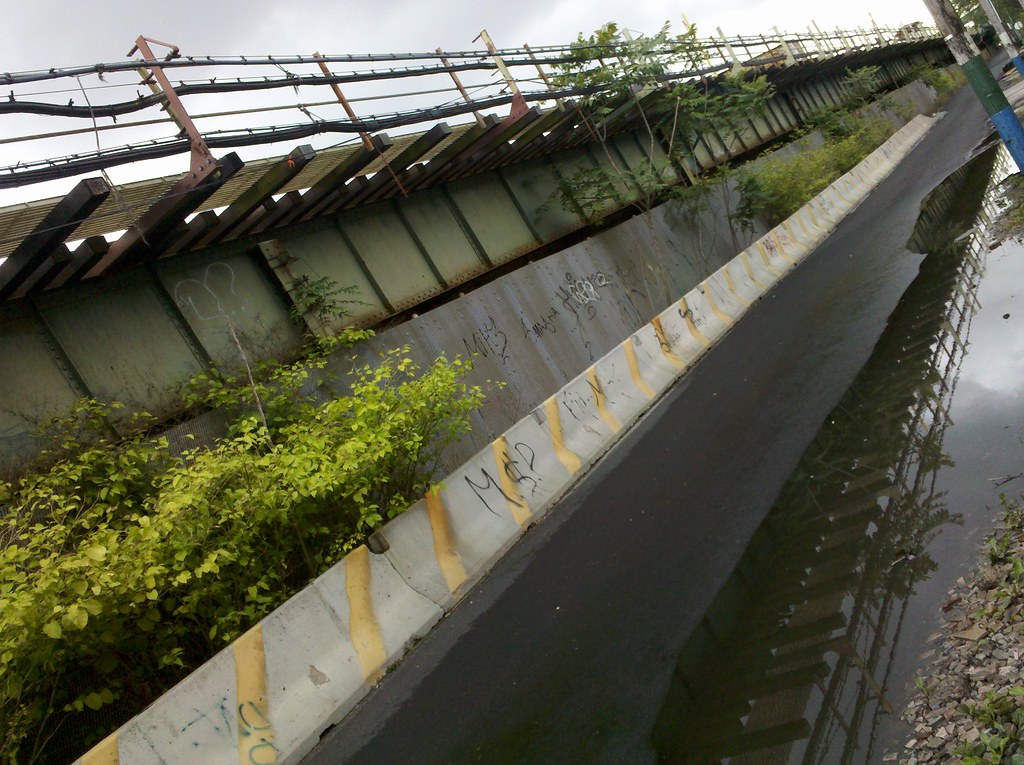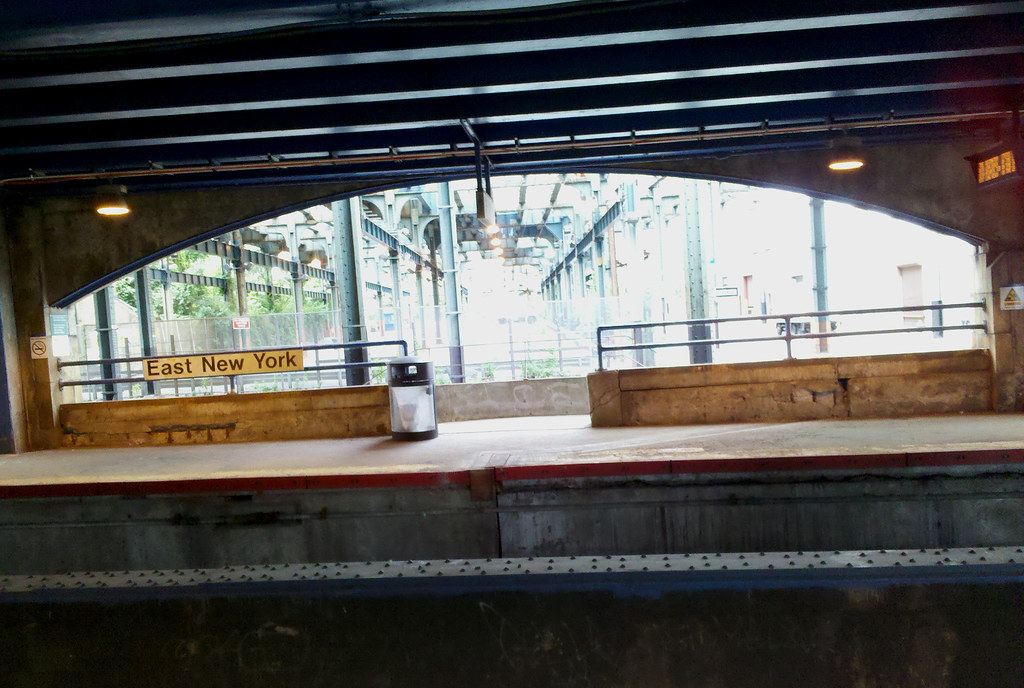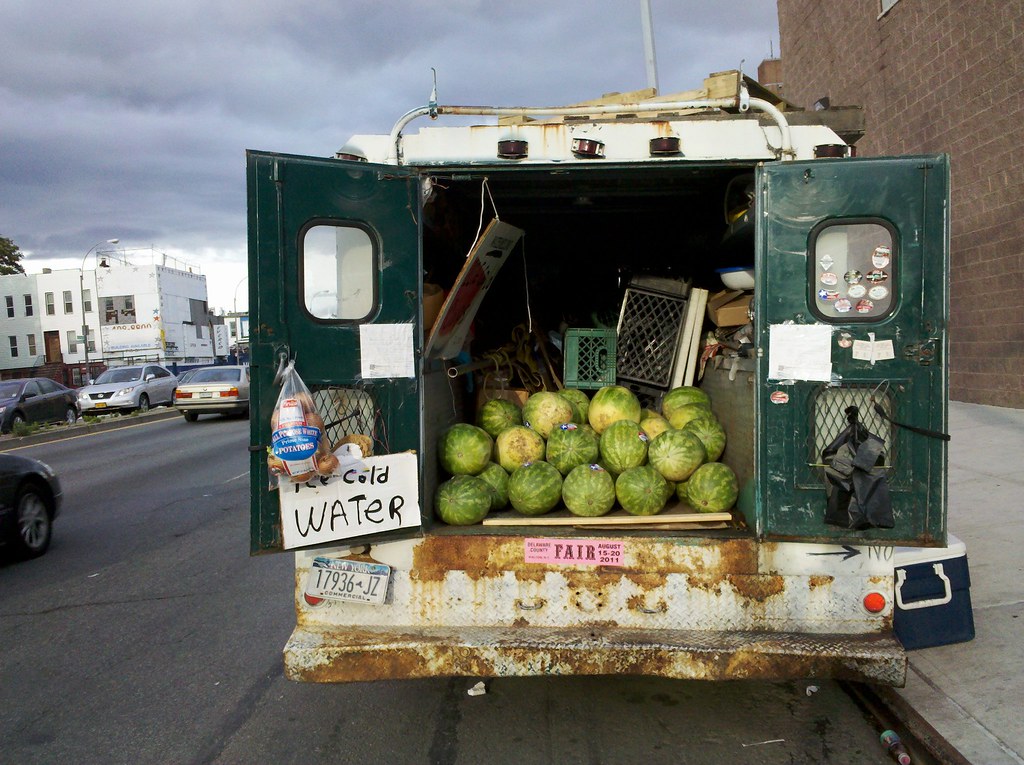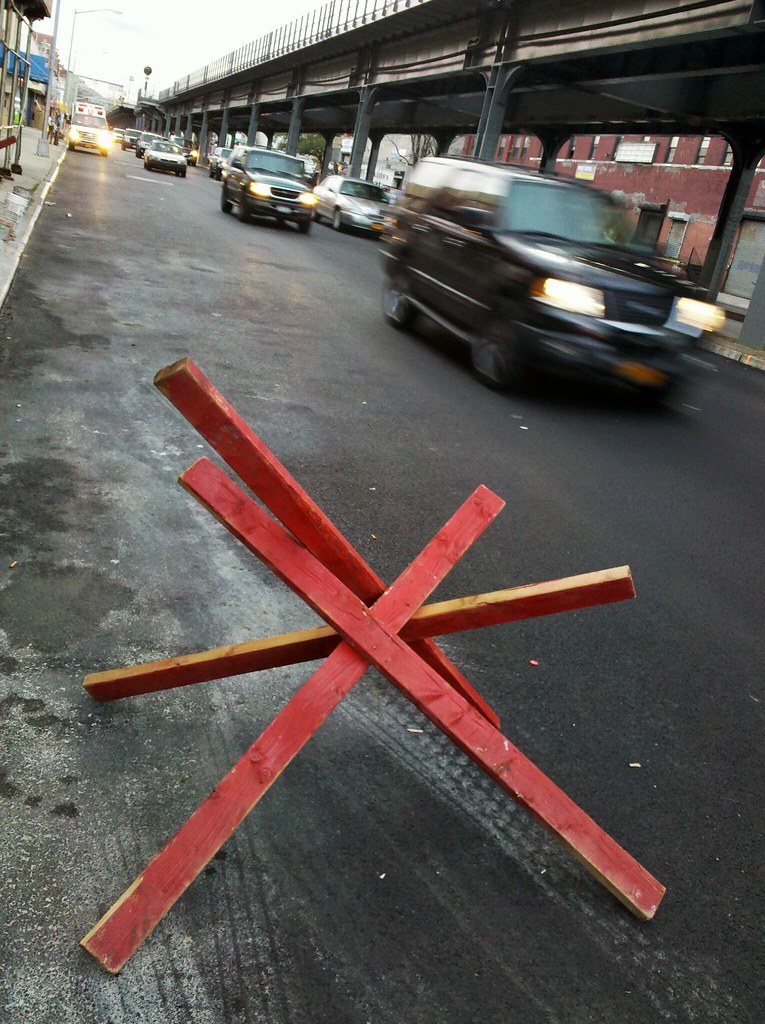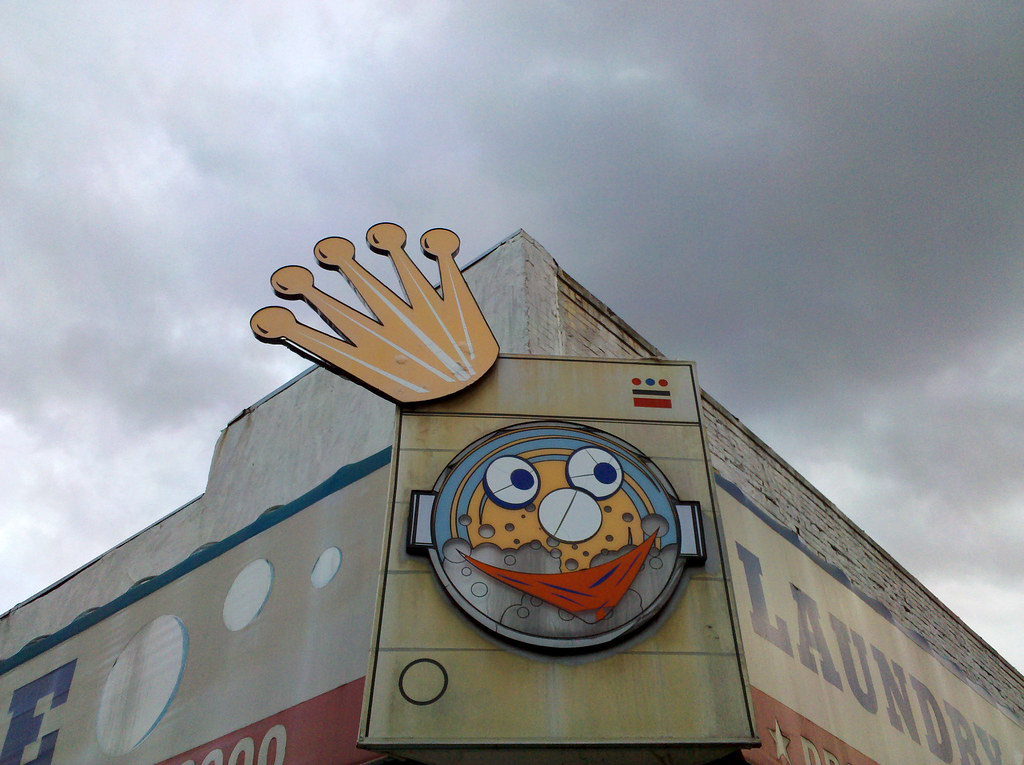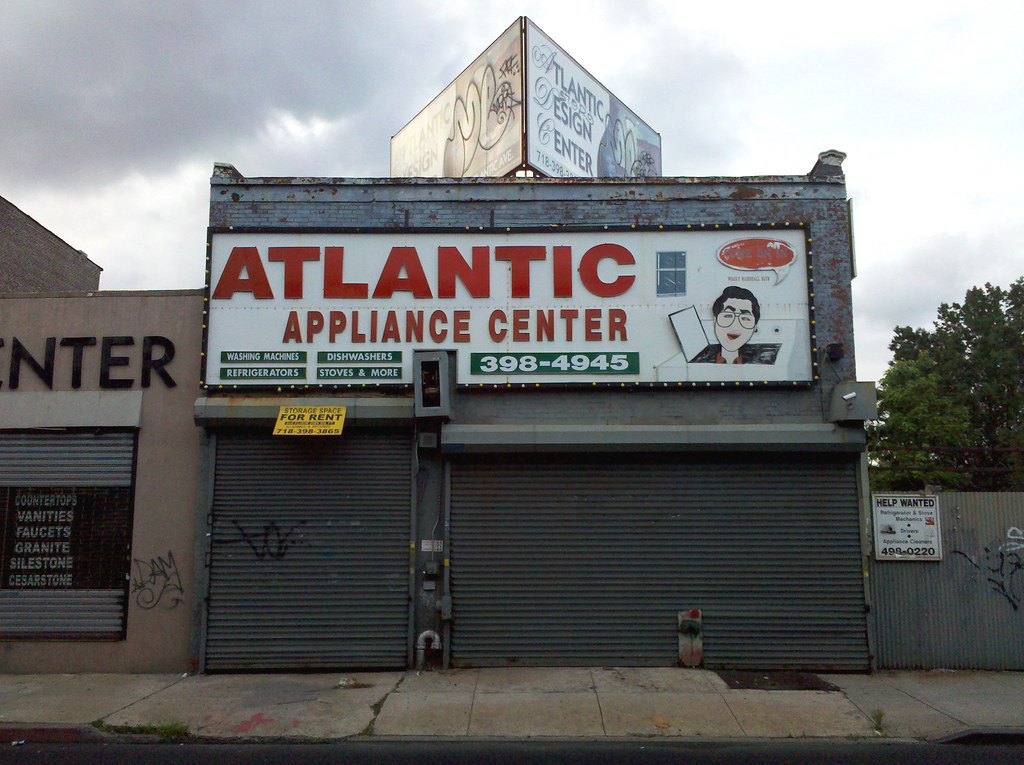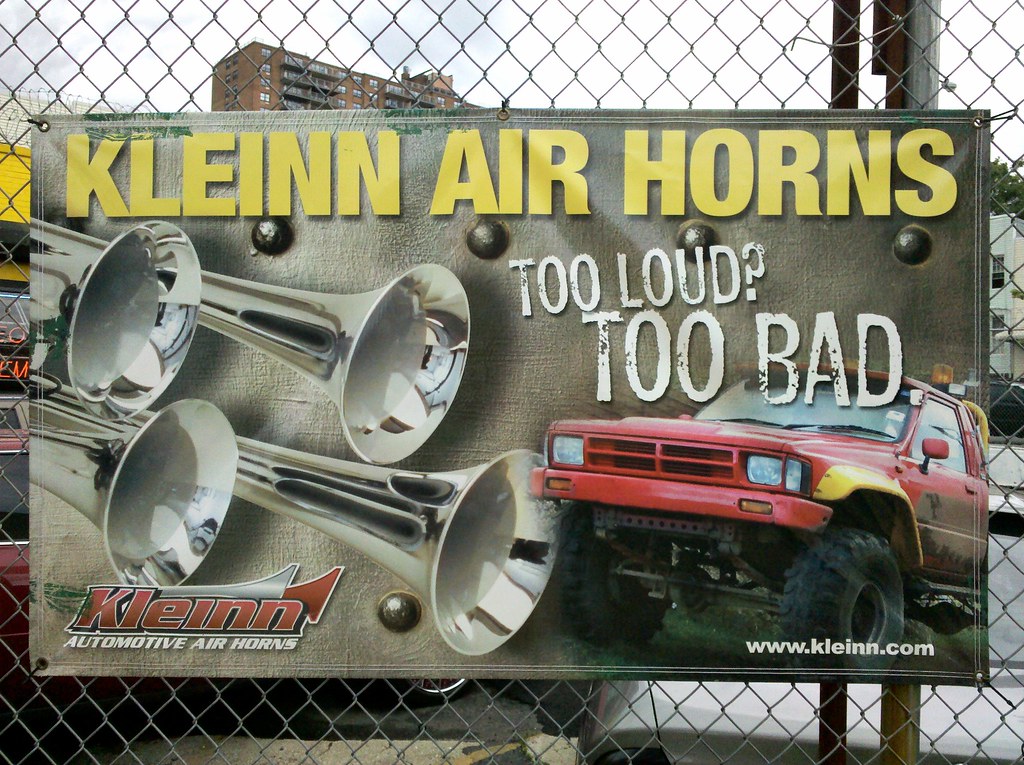
this company exists for the sole purpose of pissing people off.
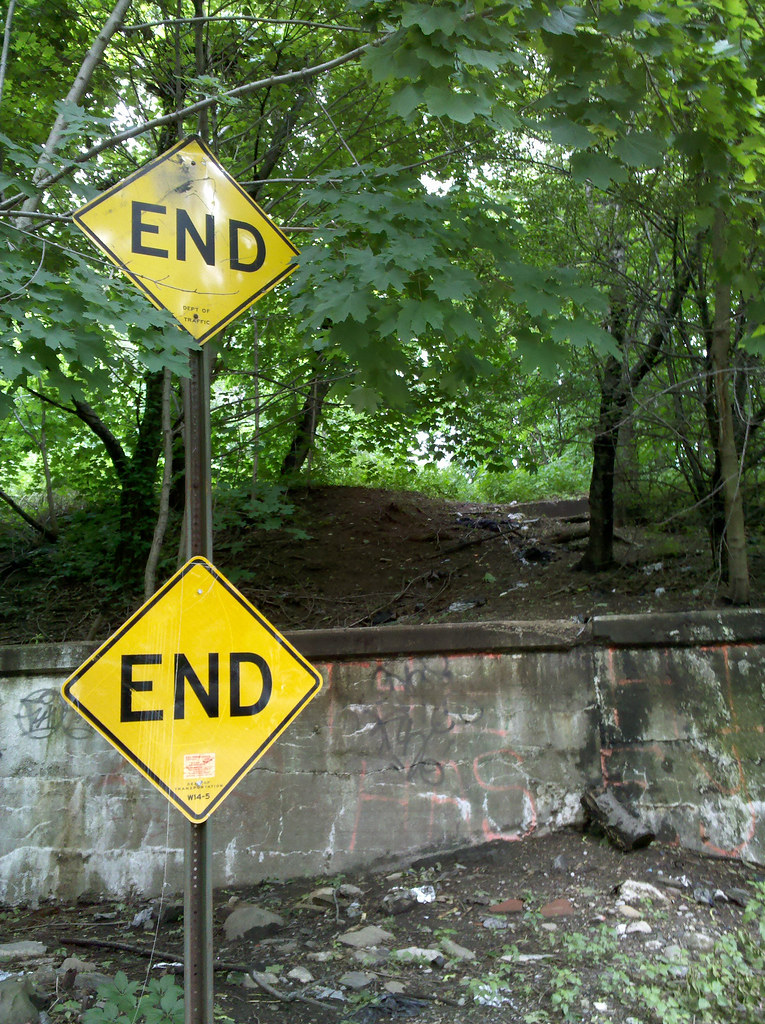
As in this case, we have two different eras of traffic sign bureaucracy represented here. Both signs, however, were probably made at the same place: the country's largest municipal sign shop.

Quite popular in certain parts of the city, it's apparently "not the best choice if you live in an upscale area where people don't fart."

The tale of Samuel Rubel exemplifies the classic American rags-to-riches story: Penniless Latvian immigrant arrives on the streets of New York; builds multi-million-dollar coal-and-ice empire from meager beginnings as a door-to-door peddler; proposes to employee, then later breaks off the engagement; she sues him; he has her arrested on charges of forgery and grand larceny; they later get married, have two kids, and live happily ever after.
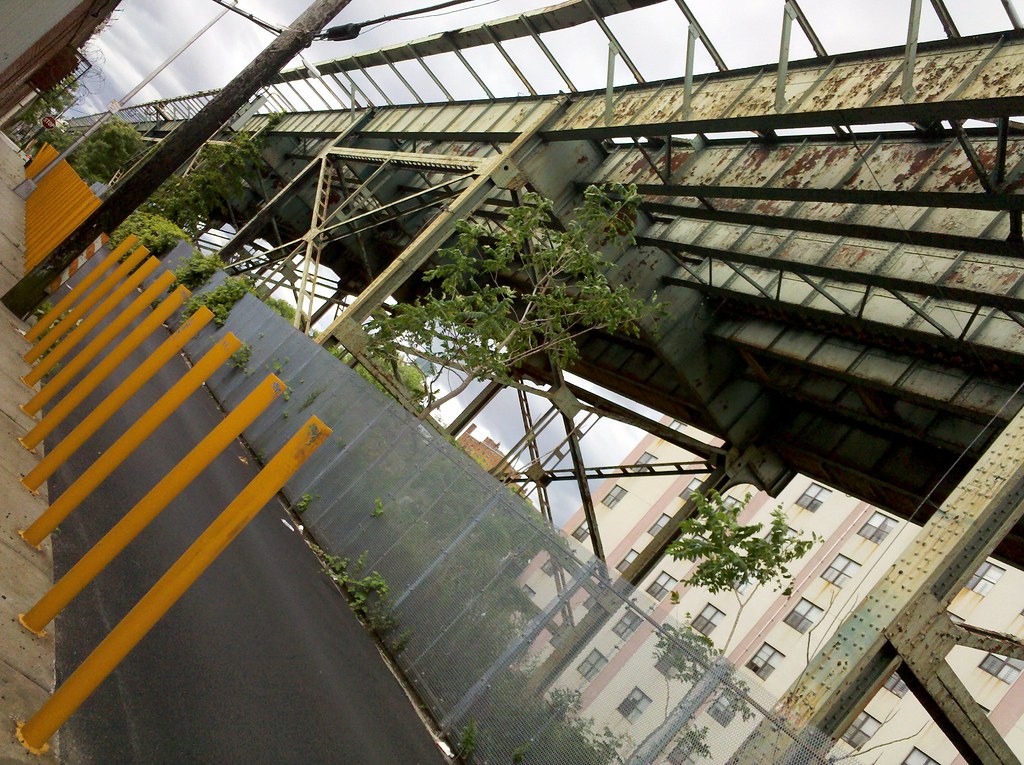
Now running side by side with the skeleton of the Fulton Street Elevated
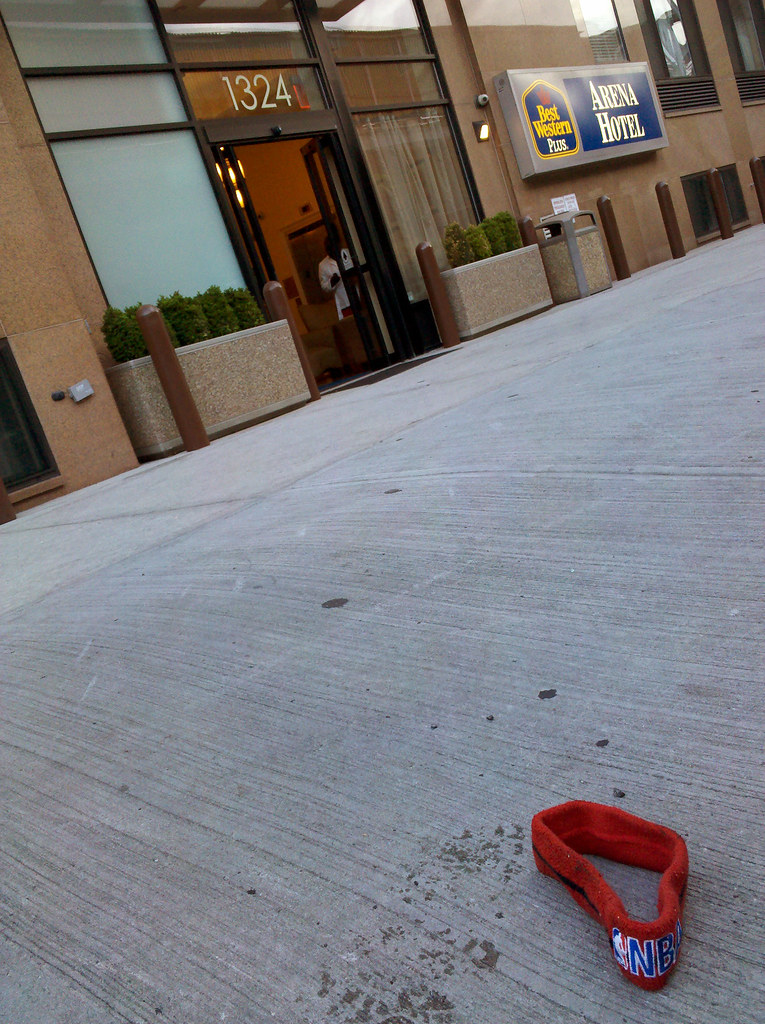
Trying to cash in on the controversial basketball arena being built about a mile and a half down Atlantic Avenue
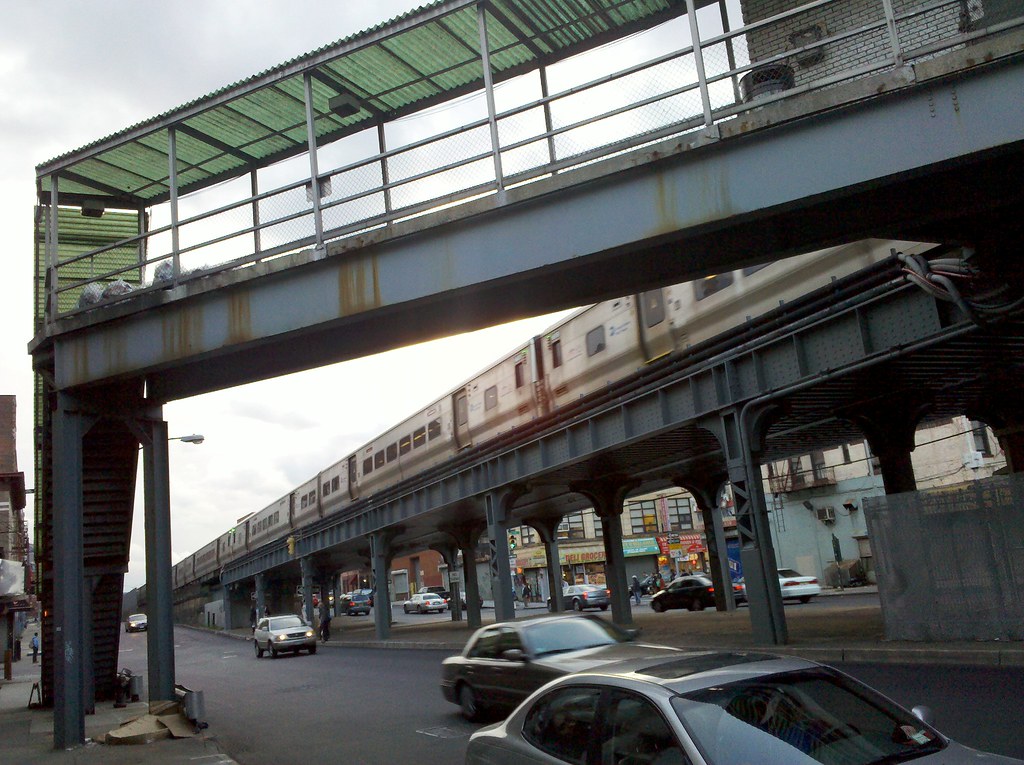
This is the only station on the Atlantic Avenue Viaduct, which just underwent a well-photographed rehabilitation.

Albert Einstein was a patient at this hospital (which is now an apartment building) in 1948; he had his abdominal aorta reinforced to ward off the rupture of an aneurysm that was discovered by his surgeon. After recovering from this procedure, he lived another 6+ years before the aneurysm finally burst in 1955. He refused further surgery at that point, saying "It is tasteless to prolong life artificially. I have done my share; it is time to go."
Einstein had specifically requested that no memorial service be held for him, and that his body be cremated and the ashes scattered without ceremony in a secret location. His wishes were mostly followed, except for that one guy who removed his brain and kept it for the next four decades.

